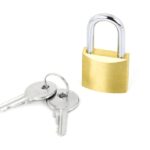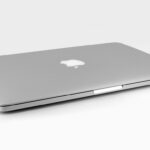Kaip išsirinkti telefoną šiandien, kai pasirinkimas tiesiog pribloškia Prisimenu laikus, kai telefono pasirinkimas buvo paprastas – Nokia ar Motorola, ir tiek. Dabar užeini į elektronikos parduotuvę ar atidari bet kurį interneto puslapį, ir akys tiesiog raibsta nuo pasirinkimo. 2025 metais mobiliųjų telefonų rinka yra tokia įvairi, kad net technologijų entuziastai kartais pasimeta. Vienas giriasi 200 […]
Category Archives: Kompiuterių remontas, naujienos
Telefonai Huawei: geriausios kainos po sankcijų
Kas nutiko su Huawei ir kodėl dabar galima rasti pigiau? Kai 2019 metais JAV įvedė sankcijas Huawei, daugelis manė, kad kinų technologijų milžinas tiesiog išnyks iš rinkos. Tačiau realybė pasirodė esanti daug įdomesnė. Taip, įmonė prarado prieigą prie Google paslaugų, o vėliau ir prie pažangiausių procesorių gamybos technologijų. Bet ar tai reiškia, kad Huawei telefonai […]
Samsung A52 5G kaina: ar verta pirkti šiandien
Kas yra Samsung Galaxy A52 5G ir kodėl jis vis dar aktualus Kai 2021 metais Samsung pristatė Galaxy A52 5G, šis telefonas greitai tapo vienu populiariausių vidutinės klasės įrenginių. Dabar, praėjus keliems metams, daugelis žmonių vis dar svarsto – ar verta investuoti į šį modelį, ypač kai jo kaina gerokai nukrito nuo pradinės? Pirmiausia reikia […]
Operacinės sistemos: Android ir iOS palyginimas
Kaip viskas prasidėjo Prieš keletą dešimtmečių niekas negalėjo net įsivaizduoti, kad kišenėje nešiosimės galingesnius kompiuterius nei tie, kurie kadaise užėmė ištisus kambarius. O dabar? Išmanieji telefonai tapo neatsiejama mūsų gyvenimo dalimi. Tačiau už visų tų programėlių, nuotraukų ir žinučių slypi kažkas svarbesnio – operacinė sistema, kuri viską valdo ir organizuoja. Šiandien išmaniųjų telefonų rinkoje dominuoja […]
Išmanusis telefonas: kaip pasirinkti 2025
Kas iš tiesų svarbu renkantis telefoną šiandien Prisimenu laikus, kai telefonų parduotuvėse žmonės karštligiškai lygindavo megapikselių skaičių ir procesorių branduolių kiekį. Dabar situacija pasikeitusi – dauguma telefonų yra tokie galingi, kad net nežinai, ką su ta galia daryti. 2025 metais renkantis išmanųjį telefoną reikia galvoti visai apie kitus dalykus, nei prieš penkerius metus. Pirmiausia verta […]
VPN kas tai: kaip apsaugoti savo privatumą internete
Kas slypi už trijų raidžių VPN Kai naršome internetą, dažnai nė nepagalvojame, kad kiekvienas mūsų žingsnis gali būti stebimas. Jūsų interneto paslaugų teikėjas (ISP) mato, kokias svetaines lankote, kokius vaizdo įrašus žiūrite, ką ieškote. Reklamų tinklai seka jus iš vienos svetainės į kitą, kurdami išsamų jūsų elgsenos profilį. O jei dar prisijungiate prie viešo Wi-Fi […]
Dažnio keitiklis: automatizacija namuose
Kas tas dažnio keitiklis ir kodėl jis svarbus namuose Dažnio keitiklis, arba kaip jį dar vadina – frekvencinė pavara, inverteris – tai elektroninis įrenginys, kuris keičia elektros srovės dažnį ir įtampą. Skamba sudėtingai? Iš tiesų principas gana paprastas. Įsivaizduokite, kad turite vandens čiaupą – galite jį pasukti labiau arba mažiau, reguliuodami vandens srautą. Dažnio keitiklis […]
Rankiniu būdu: kaip perjungti telefoną į rankinis režimą
Kodėl apskritai reikia rankinio režimo? Turbūt ne kartą pastebėjote, kad jūsų telefonas kartais tiesiog „gyvena savo gyvenimą” – automatiškai prisijungia prie silpniausio Wi-Fi tinklo parduotuvėje, persijungia tarp mobiliojo ryšio bokštų net kai to nereikia, arba įsikabina į 3G signalą, nors šalia yra puikus 4G. Štai čia ir prasideda visa ta istorija su rankiniu režimu. Rankinis […]
Telefono nustatymai: svarbiausi dalykai pradedantiesiems
Kas slepiasi tų nustatymų labirintuose Pirmą kartą įsigijus naują išmanųjį telefoną, daugelis žmonių tiesiog pradeda jį naudoti su gamykliniais nustatymais. Ir tai veikia – galima skambinti, rašyti žinutes, naršyti internete. Tačiau tikroji telefono galia atsiskleidžia tik tada, kai supranti, kaip tinkamai jį sukonfigūruoti. Nustatymai – tai ne tik techninė dalis, bet ir būdas pritaikyti įrenginį […]
Nemokamas internetas: kur rasti WiFi viešose vietose
Kodėl visi medžioja nemokamą WiFi Prisipažinsiu atvirai – mobiliojo interneto paketai Lietuvoje nėra pigūs, o kai kuriose vietose ryšys tiesiog neveikia taip, kaip norėtume. Todėl nemokamas WiFi tapo tarsi šiuolaikinio miesto oaze. Nesvarbu, ar esi studentas, bandantis sutaupyti kiekvieną eurą, ar keliautojas, kuris nenori mokėti už tarptautinį duomenų perdavimą, ar tiesiog žmogus, kuriam reikia skubiai […]
IP adresai: kaip paslėpti savo buvimo vietą
Kas tie IP adresai ir kodėl jie taip svarbūs Kiekvieną kartą, kai prisijungiate prie interneto, jūsų įrenginys gauna unikalų identifikatorių – IP adresą. Tai tarsi jūsų skaitmeninis pašto adresas, kuris leidžia kitiems kompiuteriams žinoti, kur siųsti informaciją. Problema ta, kad šis adresas atskleidžia ne tik jūsų maždaug geografinę vietą, bet ir interneto paslaugų teikėją, o […]
Apple kompiuteriai kaina: MacBook ir iMac palyginimas
Kodėl Apple kompiuteriai kainuoja tiek, kiek kainuoja? Kai pirmą kartą pažvelgi į Apple kompiuterių kainas, gali pajusti lengvą šoką. MacBook Air pradeda nuo maždaug 1200 eurų, o profesionalūs modeliai gali peršokti ir 3000 eurų ribą. iMac kompiuteriai taip pat nėra pigūs – baziniai modeliai startuoja nuo panašių sumų. Bet kas gi slepiasi už tų kainų? […]
E interjeras: virtualios realybės dizaine
Kai kompiuteris tampa architekto dirbtuve Prisimenu, kaip prieš kokį dešimtmetį interjero dizaineriai dar braižė eskizus ant popieriaus, klijavo medžiagų pavyzdžius į albumus ir prašė klientų įsivaizduoti, kaip atrodys jų būsimas namas. Dabar viskas pasikeitė – įsijungi kompiuterį, užsimauni specialius akinius ir staiga atsiduri savo dar nepastatyto buto svetainėje. Gali vaikščioti po kambarį, pakeisti sofos spalvą, […]
Huawei planšetė: geriausios kainos ir modeliai
Kas yra Huawei ir kodėl jų planšetės vertos dėmesio Kinų technologijų milžinė Huawei pastaraisiais metais patyrė nemažai iššūkių, bet tai nesutrukdė jiems kurti tikrai įdomių ir kokybišką planšečių. Jei dar prieš kelerius metus daugelis žmonių pirko planšetes tik dėl to, kad „reikia turėti”, tai dabar situacija pasikeitė – planšetės tapo rimtu darbo įrankiu, pramogų centru […]
Google Pixel kaina Lietuvoje 2025
Kas tie Google Pixel telefonai ir kodėl apie juos visi kalba Jei sekate technologijų naujienas, tikriausiai pastebėjote, kad Google Pixel telefonai pastaraisiais metais įgavo tikrai rimtą pagreitį. Tai nebe tie eksperimentiniai įrenginiai, kuriuos Google kūrė daugiau kaip technologijų demonstravimo priemonę. 2025 metais Pixel serija tapo visaverčiu iPhone ir Samsung Galaxy konkurentu, o Lietuvoje šie telefonai […]
Pigu lt telefonai: ar verta pirkti internetu
Kas gi ta Pigu.lt ir kodėl ten visi perka telefonus Pigu.lt – tai viena didžiausių elektroninės prekybos platformų Lietuvoje, kur galima rasti beveik viską – nuo virtuvės reikmenų iki pačios naujausios elektronikos. Telefonai čia užima ypatingą vietą, nes tai viena populiariausių kategorijų. Bet ar tikrai verta čia pirkti savo kitą išmanųjį telefoną, ar gal geriau […]
Parduodami kompiuteriai: kur ieškoti geriausių kainų
Kodėl kompiuterio pirkimas tapo tokiu sudėtingu Prisimenu laikus, kai kompiuterio pirkimas buvo gana paprastas – nuėjai į artimiausią elektronikos parduotuvę, pasirinkai vieną iš kelių modelių ir viskas. Dabar situacija kardinaliai pasikeitė. Rinka perpildyta pasiūlymų, kainos šokinėja kaip pavasarį temperatūra, o pasirinkimo galimybių tiek daug, kad galva ima suktis. Šiandien kompiuterį galima nusipirkti fizinėje parduotuvėje, internetu, […]
Smartnet registracija telefone
Kas tas Smartnet ir kodėl apie jį verta žinoti Jei kada nors bandėte prisijungti prie viešo Wi-Fi tinklo prekybos centre, oro uoste ar kavinėje, tikriausiai pastebėjote, kad kartais telefone iššoka pranešimas apie Smartnet registraciją. Daugelis žmonių šiame momente sutrinka – kas tai per dalykas, ar saugu registruotis, ir ar apskritai verta su tuo kapstyti? Smartnet […]
Gamyba: automatizacija ir robotika
Kai mašinos atėjo į gamyklą Prisimenu, kaip vaikystėje lankiausi tėvo darbe – nedidelėje baldų gamykloje. Tada ten dirbo gal trisdešimt žmonių, kurie rankomis pjaudavo, šlifavo, lakavo. Praėjus dvidešimčiai metų ta pati gamykla įdarbina vos dešimt žmonių, bet gamina tris kartus daugiau baldų. Magija? Ne, tiesiog automatizacija ir robotika. Gamybos automatizacija nėra koks nors naujas reiškinys […]
Mokėjimo kortelė telefone: kaip veikia NFC
Kai kortelė tampa nematoma Prisimenu, kaip prieš kokius dešimt metų žmonės vis dar žiūrėdavo keistai, kai kas nors bandydavo mokėti telefonu. Dabar tai tapo tokia kasdienybe, kad net nesivaržome palikti fizinės piniginės namuose. Tiesiog prieini prie terminalo, pridedi telefoną ir – voila – mokėjimas atliktas. Bet kas gi ten iš tikrųjų vyksta? Kodėl tas mažas […]



















